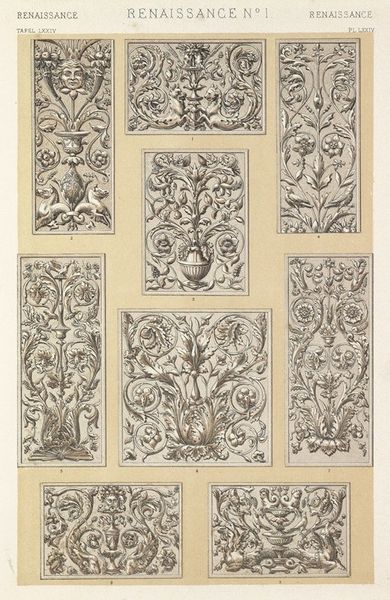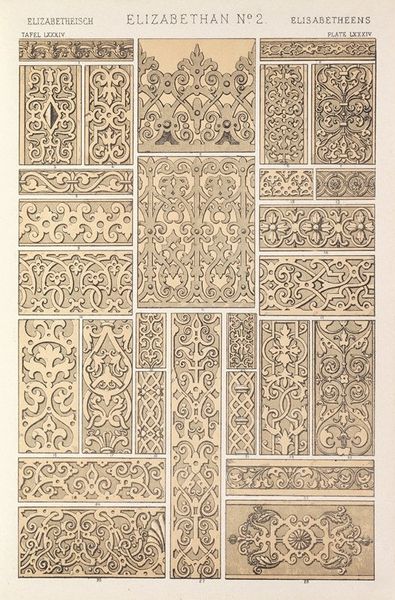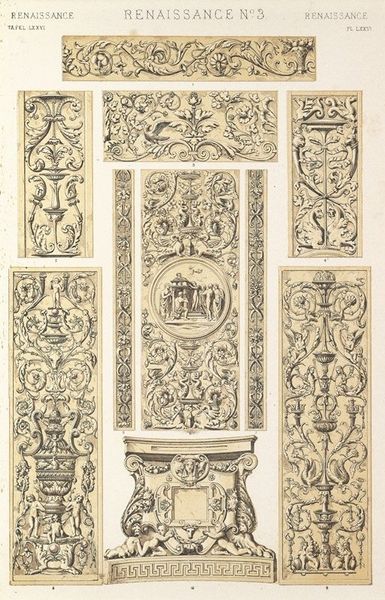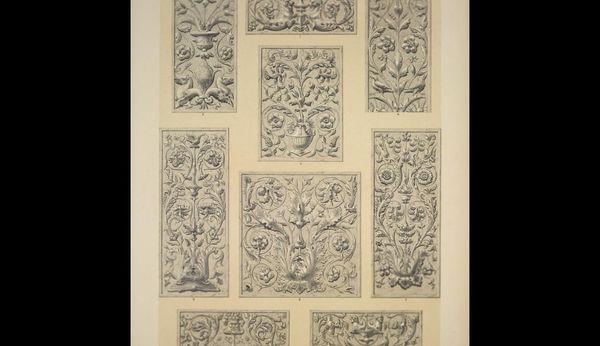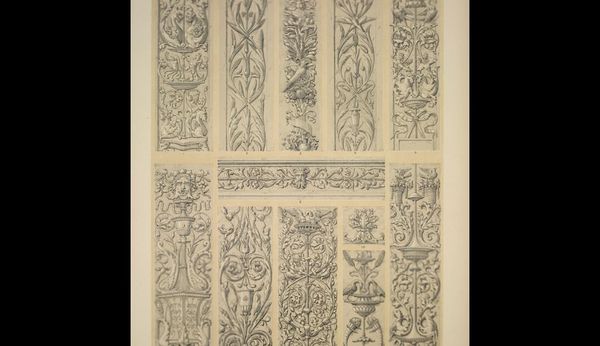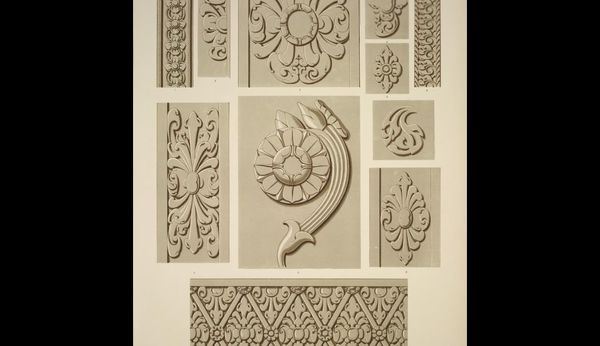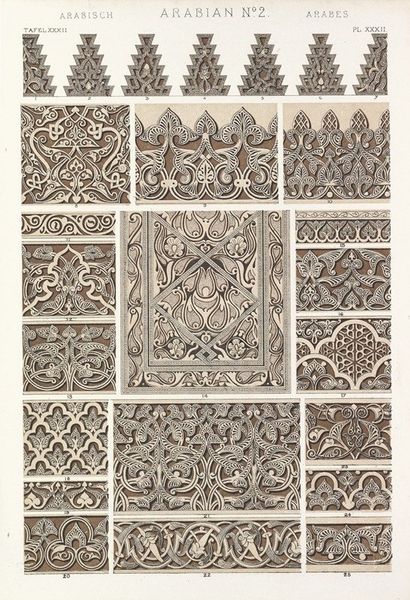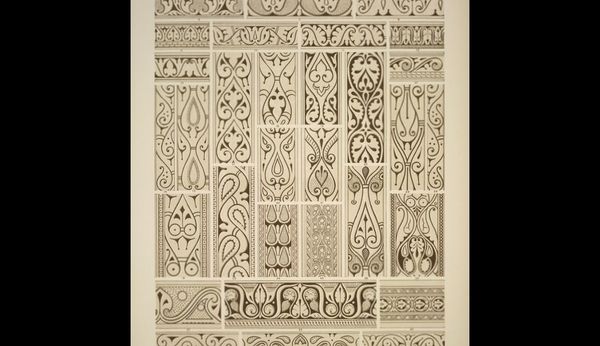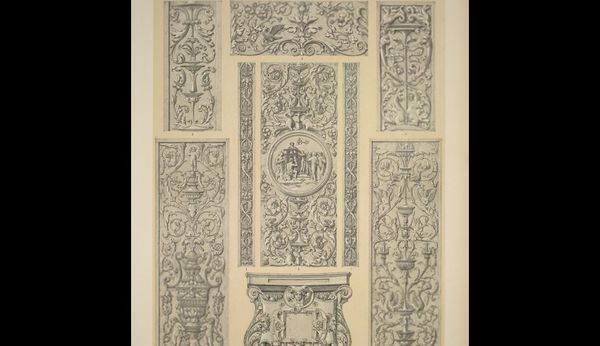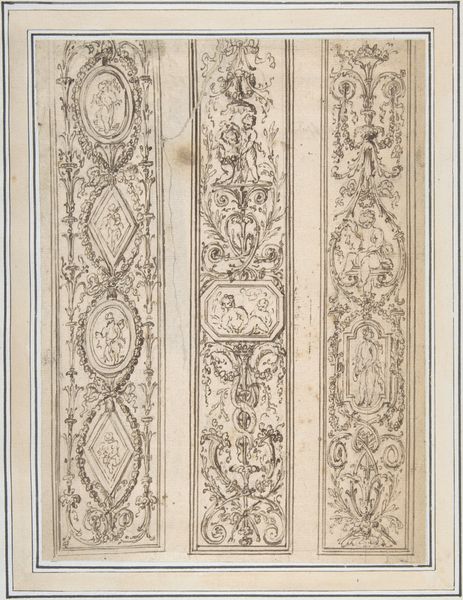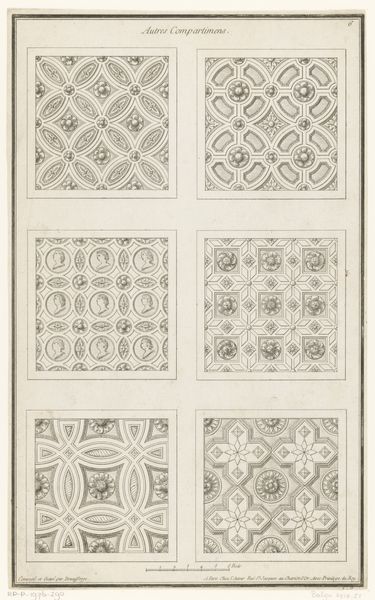
drawing, graphic-art, print, engraving, architecture
#
drawing
#
graphic-art
# print
#
old engraving style
#
form
#
11_renaissance
#
line
#
decorative-art
#
engraving
#
architecture
Copyright: Public Domain: Artvee
This plate of lithographs was made by Owen Jones in the 19th century. It shows us a variety of decorative motifs from the Renaissance. Notice the abundant use of acanthus leaves, a common motif in classical architecture, symbolizing endurance. These flow around palmettes, which in ancient Egypt stood for the tree of life. We also see grotesque masks, human-animal hybrids, that originated in ancient Roman art, and were revived during the Renaissance as symbols of wit and inventiveness. These motifs, originally pagan, were later integrated into Christian art, illustrating the syncretism inherent in the Renaissance. Consider how these classical motifs echo through time. The acanthus leaf, for example, appears in Roman temples, medieval manuscripts, and even modern-day logos. It is a potent demonstration of the collective memory embedded in visual symbols. The presence of grotesque masks, evokes the chaotic forces of the unconscious mind. These designs were once vibrant with life. Today, they are relics reminding us of the cyclical nature of cultural expression, perpetually resurfacing, evolving, and adapting to new contexts.
Comments
No comments
Be the first to comment and join the conversation on the ultimate creative platform.
